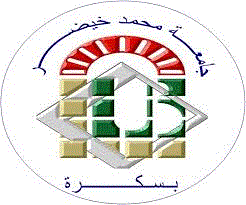| Titre : | Approche multicritère en conception bioclimatique et optimisation par le biais d’un langage architetectural |
| Auteurs : | Oussama Gaouas ; Said Mazouz, Directeur de thèse |
| Support: | Mémoire magistere |
| Editeur : | Biskra [Algerie] : Université Mohamed Khider, 2014 |
| Langues: | Français |
| Mots-clés: | Architecturale ; L'évaluation ; Performance ; Typologie architecturale ; La ville, Biskra Architectural ; Evaluation ; City ; Biskra |
| Résumé : |
Ce mémoire est fondé sur l'idée que la conception bioclimatique en particulier et la conception architecturale en général se fonde sur l'évaluation et l'intégration de tous les différents critères de conception qu’ils soient qualitatifs ou quantitatifs. Ces critères sont souvent compliqués et contradictoires. Ceci rend difficile, pour un architecte, d’opter pour une conception rationnelle et évaluer la « qualité» globale d'une solution de conception proposée. Donc, il est important de disposer d'une méthode qui puisse assister le concepteur dans le choix d’une solution architecturale permettant d’aboutir à un bâtiment qui présente une bonne performance sur les critères considérés. Afin de spécifier une approche qui s'insérerait au mieux dans le processus de conception, un état de l'art des méthodes multicritères a été effectué. La méthode SAW a semblé être la plus appropriée. Cette méthode aide l'architecte dans le choix d'une solution architecturale et permet d’aider à concevoir un bâtiment qui présente une bonne performance sur les critères considérés. Ce travail présente une méthode d'aide à la conception architecturale pouvant être utilisée dans la phase initiale de la conception des bâtiments. Pour son développement, nous nous sommes basés sur la méthode de l'analyse multicritère pour le classement des alternatives de projet. Les critères considérés ont été : le confort thermique ; le confort visuel ; la quantité de lumière naturelle ; l’ensoleillement et la consommation énergétique. Les performances des solutions de projet concernant ces critères ont été obtenues à travers des simulations, en utilisant pour cela les logiciels Ecotecté et Radianceé. Les différentes alternatives architecturales sur lesquelles les choix vont se porter seront en relation avec l’orientation du projet, la dimension des fenêtres et le type de climatisation du local étudié, qu’il faut définir au cours de l'avant-projet. Nous présentons un exemple d'application de la méthode dans lequel est considérée comme typologie architecturale, une école primaire. Les simulations ont été réalisées en considérant les conditions du climat chaud et aride de la ville de Biskra. Les résultats des simulations et les règles de tendance obtenues (qui décrivent les comportements de l’école) sont montrés sous forme de courbes et de graphes. Enfin un tri des solutions de projet a été effectué en employant la méthode SAW et les meilleures solutions architecturales ont été identifiées. This academic dissertation is based on the assumption that architectural design in general and bioclimatic design in particular relies on the evaluation and integration of all the different design criteria either qualitative or quantitative. These criteria are often quite complicated to cope with and may be conflicting. This makes it cumbersome to achieve a rational design and assess the overall “goodness” of a proposed design solution. Therefore, it is important to have a method that can assist the designer to choose an architectural solution that will turn into a building that presents a good performance related to those criteria. In order to specify an approach that would fit into the building design process, a survey of multi-criteria methods was carried out. This latter resulted in the conclusion that “simple additive weighting” approach appeared to be most suitable. This method assists the architect in the choice of the best architectural solution and makes it possible to lead to a building which presents a good performance on the criteria considered. This work presents an architectural conception aiding method to be used in the initial phase of a building design. It is based on a multicriteria analysis method for the ranking of the project alternatives. The considered criteria were: the thermal comfort; the visual comfort; the amount of natural light; the solar exposure and the energy consumption. The performances of each project solution related to these criteria were obtained by means of simulation. The softwares used in the research are Ecotect © and Radiance ©. The differences between the architectural solutions are given by some building parameters generally available during the sketch phase, like building orientation, windows sizes and the type of air conditioning. The application of the method is based on general rules of behavior derived from the simulated performances of the building. An example of the method application is presented. The architectural typology considered was a primary school. The simulations were carried out considering the hot arid climate conditions of Biskra. Both the simulation results and some tendency rules describing the building behaviors are shown, in the form of curves and graphs. Finally a ranking of project solutions was carried out using SAW method and the best solutions were indentified. |
Exemplaires (1)
| Cote | Support | Localisation | Disponibilité | Emplacement |
|---|---|---|---|---|
| TH/1662 | Mémoire magistere | Bibliothèque centrale El Allia | Exclu du prêt | Salle de consultation |
Consulter en ligne (1)
Consulter en ligne URL |



